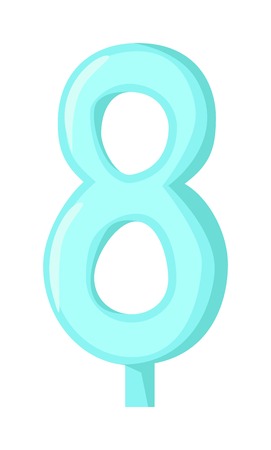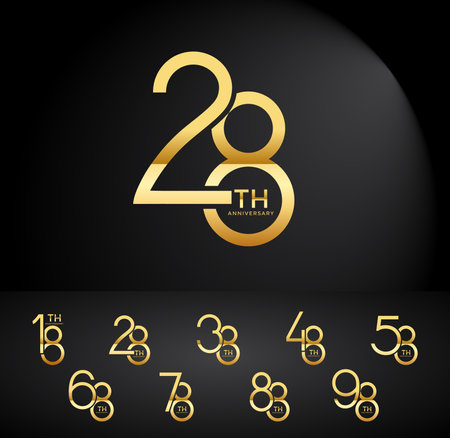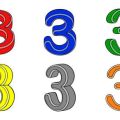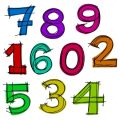1. Introduction: Why Runes Still Matter
In the ever-evolving landscape of American spirituality, rune reading continues to captivate seekers from all walks of life. Despite its ancient roots in Norse and Germanic traditions, the practice of interpreting runes has found a vibrant place among modern spiritual communities across the United States. From New Age bookstores in Portland to eclectic metaphysical shops in Brooklyn, runes are being explored for personal guidance, self-discovery, and even creative inspiration. But with this renewed interest comes a host of misconceptions and myths that can cloud our understanding of what rune reading truly offers. As more Americans turn to alternative spiritual practices, its vital to separate fact from fiction and appreciate why runes still matter today. This article will delve into the most common misunderstandings about rune reading, debunking myths and offering a clear-eyed perspective on their enduring relevance in Americas contemporary spiritual scene.
2. Myth: Rune Reading Is Just Fortune Telling
One of the most common misconceptions about rune reading is the belief that it serves the same purpose as fortune telling, like gazing into a crystal ball to predict your future. However, this misunderstanding overlooks the true nature and purpose of runes in modern spiritual and psychological practices. While it’s easy to group all forms of divination together, rune reading is fundamentally different in both intention and application.
Runes as Tools for Self-Reflection
Rather than being simple predictors of fate, runes are symbolic tools that encourage introspection and deeper understanding of oneself. When you draw runes, you engage in a reflective process, examining your current circumstances, thoughts, and emotions through ancient symbols that have layered meanings. The real value lies in how these symbols prompt personal insight rather than providing concrete answers about what will happen next.
Key Differences: Runes vs. Fortune Telling
| Aspect | Rune Reading | Traditional Fortune Telling |
|---|---|---|
| Main Purpose | Self-discovery & reflection | Predicting future events |
| Approach | Interactive & interpretive | Often passive reception of predictions |
| User Role | Active participant in meaning-making | Usually waits for reader’s forecast |
| Cultural Context | Norse symbolism & philosophy | Varies (tarot, astrology, palmistry) |
| Outcome Focus | Personal growth & clarity | Specific outcomes or events |
The American Perspective on Self-Guided Insights
In American culture, there’s a growing appreciation for practices that foster self-empowerment rather than dependence on external sources for answers. Rune reading fits right into this movement—encouraging individuals to look within themselves for guidance and solutions. Instead of waiting passively for life to unfold according to some prediction, rune readers actively reflect on their situations and make choices based on newfound awareness. This approach aligns with core American values such as independence, personal responsibility, and the pursuit of self-improvement.

3. Misunderstanding: Runes Belong Only to Scandinavian Heritage
One of the most persistent misconceptions about runes is that they are exclusively tied to Scandinavian or Norse heritage. While it’s true that runes originated with the ancient Germanic peoples, including those from Scandinavia, their meaning and influence have transcended borders and cultures. In the United States, for example, runes have found a unique place within a variety of communities, far beyond those with direct Nordic ancestry.
Today, Americans from diverse backgrounds explore rune reading for personal growth, spiritual insight, and even artistic inspiration. The symbolism of runes—such as strength, transformation, and protection—resonates universally. This broad appeal has led to the integration of runic symbols in everything from modern tattoo art to mindfulness practices.
In fact, American neopagan movements, New Age communities, and even academic circles have embraced runes for their historical significance and spiritual potential. Workshops on rune reading are frequently held in cities across the U.S., attracting participants interested in both cultural history and personal development. Social media platforms also play a role in spreading knowledge about runes, allowing enthusiasts nationwide to share interpretations and experiences regardless of their heritage.
By recognizing the global journey of runes, we see that their relevance is not confined by geography or ancestry. Rather, their symbolic power speaks to universal human experiences—making rune reading a practice that anyone can engage with meaningfully.
4. Myth: Anyone Can Instantly Read Runes
One of the most common misconceptions about rune reading in the United States is the belief that anyone can instantly pick up a set of runes and begin interpreting them with accuracy. While rune sets are widely available and their symbols may seem straightforward at first glance, genuine rune reading involves much more than simple intuition or guesswork.
Rune reading is deeply rooted in centuries-old Norse and Germanic traditions. Each rune carries not only a phonetic value but also layers of historical, mythological, and cultural significance. Without an understanding of these backgrounds, interpretations risk becoming shallow or misleading. Just as interpreting Shakespeare requires knowledge of Elizabethan English and context, so does rune reading require study and respect for its origins.
The Importance of Study and Context
To truly engage with runes, one must approach them as a language—one that needs to be learned over time. This involves familiarizing oneself with:
- The Elder Futhark, Younger Futhark, or other rune alphabets
- The historical context in which each rune was used
- The symbolic meanings assigned to each character by ancient cultures
- The modern adaptations versus traditional interpretations
Differences Between Casual and Informed Rune Reading
| Aspect | Casual Approach | Informed Approach |
|---|---|---|
| Interpretation Source | Personal intuition or guidebook keywords | Study of historical texts and cultural context |
| Accuracy | Often inconsistent or generic | Rooted in tradition, nuanced understanding |
| Cultural Respect | Lacking; may appropriate symbols without understanding | Honors origin and meaning of runes |
| Growth Over Time | Limited; little depth added with experience alone | Deepens with ongoing learning and practice |
A Commitment to Learning
If you’re interested in rune reading, it’s important to treat it as a craft that demands dedication—much like learning tarot, astrology, or any other complex divinatory system. There are excellent books, workshops, and online communities where you can gain accurate information about the history and proper use of runes. By investing time in study, you honor both the tool and the tradition it represents.
5. Misunderstanding: Runes Are Inherently Dark or Occult
One of the most persistent myths surrounding rune reading is the idea that runes are exclusively tied to “dark magic” or occult practices. This misconception likely stems from media portrayals and popular culture, where ancient symbols often get linked to mysterious or sinister powers. However, this stereotype overlooks the true history and practical uses of runes, especially in modern American contexts.
Historically, runes originated as an alphabet used by Germanic peoples for writing, communication, and even everyday record-keeping. While some runes were indeed used in rituals, much like how Americans might use meaningful words or phrases in ceremonies today, their primary role was far from inherently “dark.” In fact, runes were tools for expressing ideas, telling stories, and marking important events—much like how we use language now.
Emphasizing Positive and Practical Uses
In contemporary rune reading communities across the United States, practitioners focus on self-discovery, guidance, and personal growth rather than any form of occult manipulation. For many Americans interested in runes, readings are a way to reflect on challenges, gain clarity about life decisions, or simply connect with ancient traditions in a meaningful way. This is not so different from other reflective practices like journaling or meditation.
Everyday Applications
Modern rune readers may draw inspiration cards before a big job interview or use runic symbols as reminders of personal goals—comparable to how some people use motivational quotes or vision boards. These positive and practical applications show that rune reading is about empowerment, not fear or superstition.
Breaking the Stigma
Its important to separate myth from reality when it comes to rune reading. By recognizing that runes can be used for constructive purposes—such as fostering mindfulness and encouraging self-awareness—we can debunk the outdated stereotype that they are solely tools of darkness. Instead, lets appreciate their value as instruments of insight and personal development within our diverse American cultural landscape.
6. Common Misconception: Rune Sets Are All the Same
One of the most persistent myths about rune reading is the belief that all rune sets are identical and interchangeable. In reality, there is a remarkable diversity among rune systems, each reflecting different historical, cultural, and spiritual traditions. For example, the Elder Futhark, Younger Futhark, and Anglo-Saxon Futhorc are three distinct sets with unique runes, symbols, and interpretations. Each system developed in specific regions and eras, offering varying perspectives on the messages they convey.
Exploring different rune sets can enrich your understanding of rune reading and open up new avenues for insight. Some practitioners prefer the Elder Futhark for its ancient roots and broad symbolism, while others connect more deeply with the expanded Anglo-Saxon set or even modern reinterpretations designed for contemporary use. These differences arent just cosmetic—each set carries its own energy, tradition, and interpretive nuances.
In American rune reading communities, there is a growing appreciation for this diversity. Many readers encourage learning about multiple rune systems to discover which resonates most personally. Just as Tarot decks come in many styles and themes, so too do rune sets offer a spectrum of possibilities. Embracing these distinctions can lead to more personalized and meaningful readings, reminding us that not all rune paths are alike—and thats something worth celebrating.
7. Conclusion: Embracing Runes With Open Eyes
As we wrap up our journey through the myths and misunderstandings surrounding rune reading, it’s important to approach this ancient practice with both curiosity and discernment. Runes are more than just mystical symbols or fortune-telling tools—they are a living tradition rooted in history, culture, and complex symbolism. By setting aside sensationalized portrayals and embracing factual knowledge, we can truly appreciate the depth and nuance that runes offer. Responsible exploration means honoring their origins, recognizing the variety of interpretations, and respecting the cultural context from which they emerged. Whether you’re a seasoned practitioner or a curious newcomer, keep your mind open, do your research, and engage with runes thoughtfully. This approach not only enriches your understanding but also ensures that rune reading remains a meaningful and respectful practice for generations to come.


